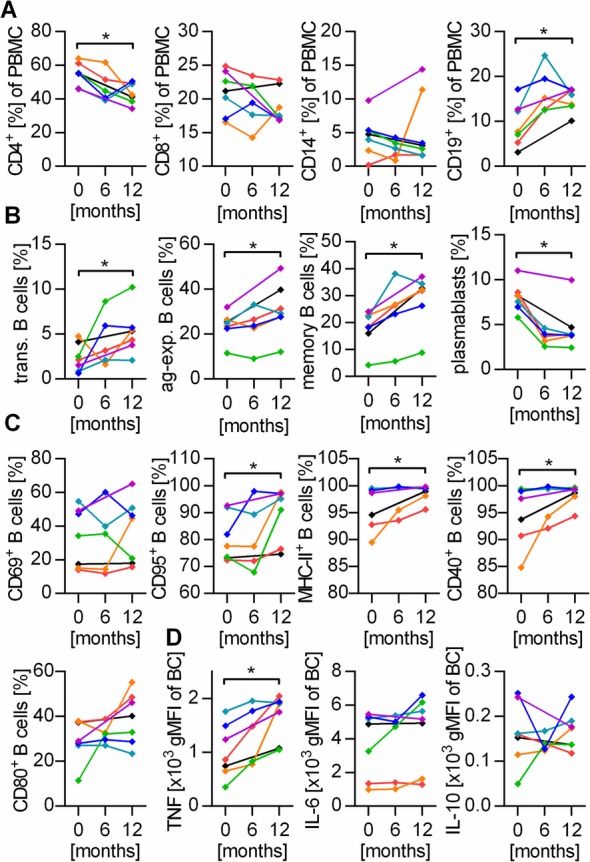Fig. 3.

Natalizumab increases pro-inflammatory properties of B cells in longitudinal samples. Blood samples (n = 7) were collected before NAT treatment initiation and at the indicated time intervals. Cells were stained with the respective antibodies and analyzed using flow cytometry. Lines connect the values of individual patients. *P < 0.05; Wilcoxon signed-rank test. a Frequency of CD4+ and CD8+ T cells, CD14+ phagocytes, and CD19+ B cells within all peripheral blood mononuclear cells (PBMC). b Frequency of transitional (trans.) B cells, antigen-experienced (ag-exp.) B cells, memory B cells, and plasmablasts within all B cells. c The expression of activation markers and molecules involved in antigen presentation was determined after stimulation with 2 μg/ml CpG for 20 h. d PBMC were pre-stimulated for 12 h with 1 μg/ml CpG, followed by 4 h of 500 ng/ml ionomycin / 20 ng/ml phorbol 12-myristate 13-acetate stimulation. Cytokine production of B cells (BC) was quantified using the geometric mean fluorescent intensity (gMFI) of the respective cytokine
